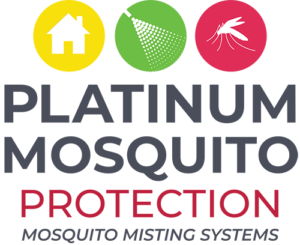
Drones are the latest weapon in Florida’s fight against mosquitos
Mosquitos in Florida may have a new adversary in the skies. The Lee County Mosquito District has been picked as one of 10 pilot programs nationwide that will test the expanded use of drone technology as a fresh approach to the age-old job of holding back the state’s unyielding mosquito population, a task the agency has tackled since 1958.
Participation in this program will allow drone operators certain special privileges not shared by everyday users. They will be able to fly at night, directly over populated areas, outside of the visible line of sight, and potentially at lower altitudes. None of these stipulations are currently permitted under the law for regular operators.
How do drones prevent the spread of mosquitos?
Drones currently provide the county with surveillance of areas not easily accessible on foot, car, or plane. They monitor waterways for aquatic weeds that shield mosquito larvae from predators and allow officials to track the effectiveness of weed killers. Eventually, the county plans to use drones to spray mosquitos, which could involve a 1,500-pound drone equipped with up to 50 gallons of pesticide. Similar plans are underway in Montana and parts of Greece.
In other parts of the globe, research teams use drones to prevent insect-borne epidemics such as malaria or Zika. Microsoft is deep in research on “Project Premonition,” which aims to detect pathogens in animals before they infect humans. The team plans to deploy drones into the wilderness to hunt and trap mosquitos. Back in the lab, they will take blood samples and detect pathogens through gene sequencing. The hope is that these techniques will eventually lead to the ability to identify signs of an early epidemic, such as avian flu or dengue fever, and perhaps even stop these epidemics in their tracks before they infect the general population.
Another prevention project of note is headed by international tech company Werobotics which, in collaboration with the Insect Pest Control Lab of the International Atomic Energy Agency, successfully tested autonomous drones that released sterile male mosquitos into areas where their illnesses run rampant. Known as sterile insect technique (SIT), the aim of this method is for the sterile males to mate with local female mosquitos and stop their reproduction.
Why use drones?
Drones, by and large, are cheaper and less environmentally destructive than the current go-to aerial method, helicopters. As such, they are ideal for smaller communities with tighter budgets. GPS can track mosquito flight patterns and drones can then follow these either with a remote, human pilot, or completely self-guiding with preprogrammed flights based on this pattern data.
They have also proven useful in overcoming the shortfalls of other current methods. Traditional CO2-baited light traps are more difficult to place in remote areas and require extensive knowledge of mosquito biology to be effective. Satellite infrared imaging can be useful to help guide long-term prevention strategies but can be easily flummoxed by cloud cover. Helicopters and other fixed-wing aircraft, as has been said, are pricey, loud, environmentally hazardous, and unable to easily reach remote areas.
What are the drawbacks?
In their current form, most drones have limited capacity to carry pesticide (40 to 50 gallons), particularly when compared with helicopters and other modern aircraft, which can deliver 150 to 200 gallons at a stretch.
The sterile insect technique (SIT) isn’t self-perpetuating. Researchers need to continuously replenish mosquito populations to be effective. And we’re talking a lot of bugs. The test in Brazil required nearly seven hundred thousand of them. At this level, expansion on a global scale will be an epic challenge.
Also, the SIT requires a male-only mosquito population and that’s not always easy to provide. If even a few females sneak into the mix, that can spell trouble, up to and including causing the very epidemic researchers would hope to prevent.
Finally, questions abound about the ethics of what it means to wipe out an entire species of mosquitos. An extinction is still an extinction, even if the animals are a nuisance at best and life-threatening at worst.
In short, the use of drones in mosquito prevention, as in so many other areas of society, is a growing source of opportunity and uncertainty. What is certain – drones or no drones – your home could use a mosquito defense system that fits your needs and budget. For a free, on-site consultation about the benefits of an automatic misting system, contact us today.
